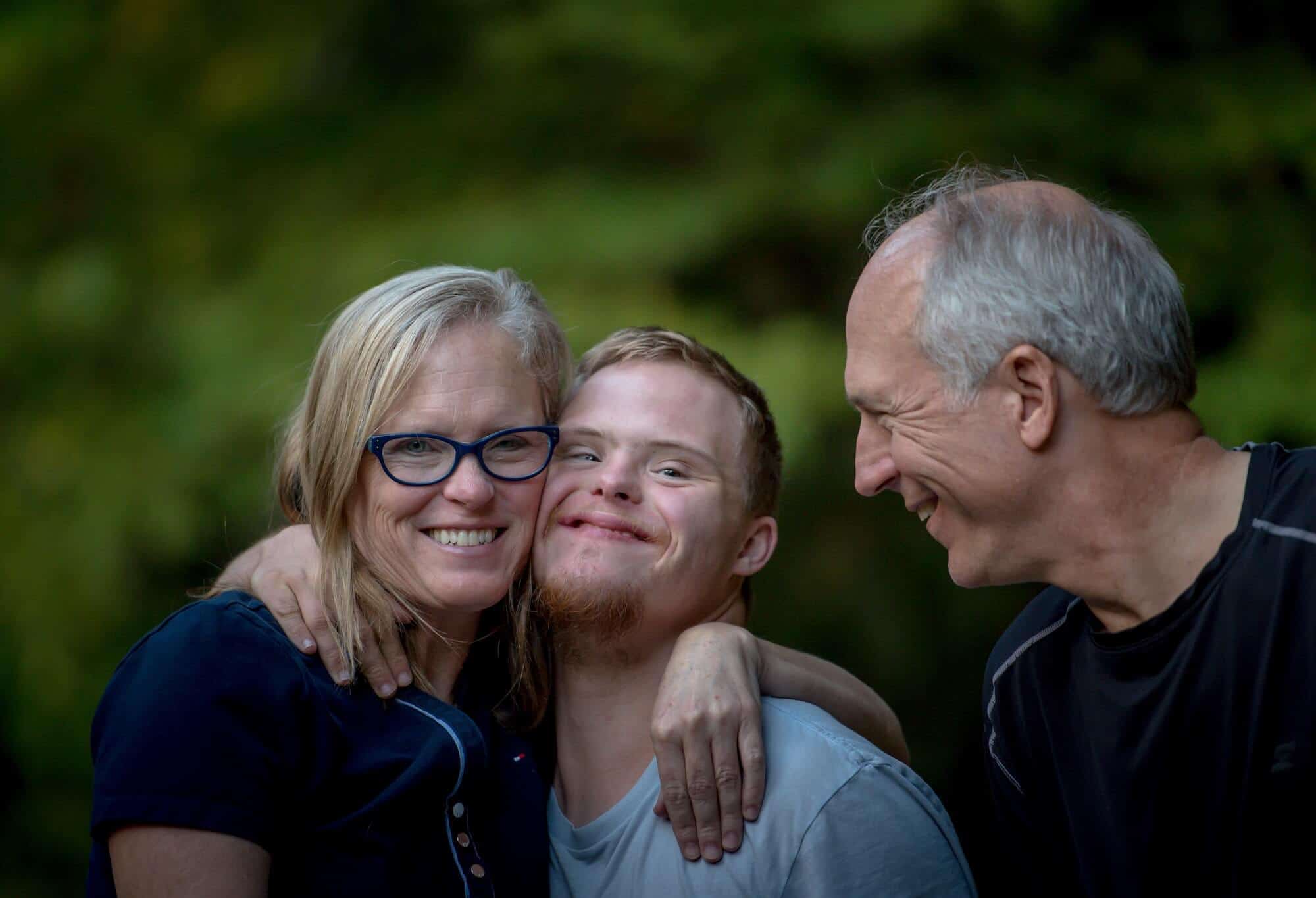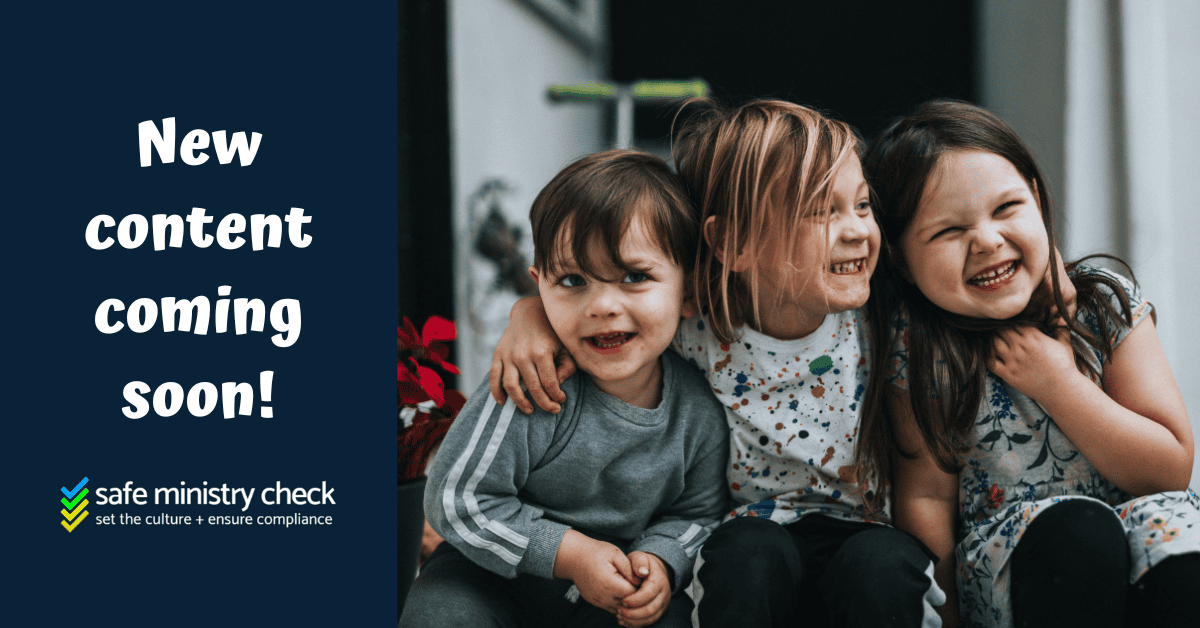What Is a ChildSafe Organisation in Australia?A Guide for Churches and Ministries
Understanding ChildSafe Organisations in the Australian Context

If your church or ministry works with children in Australia, you’ve likely heard the term “ChildSafe organisation” mentioned in conversations about safeguarding. But what is a ChildSafe organisation exactly, and what practical steps does your church need to take to become one?
In essence, a ChildSafe organisation in Australia is any organisation—including churches and religious ministries—that deliberately embeds ChildSafety into every aspect of its operations. This means integrating safeguarding into leadership decisions, cultural values, governance frameworks, and day-to-day practices.
Far more than a compliance exercise, becoming a ChildSafe organisation means creating environments where children are not only protected from harm but actively empowered to thrive in safety.
The Development of the ChildSafe Organisation Framework
The concept of what is a ChildSafe organisation gained national prominence following the Royal Commission into Institutional Responses to Child Sexual Abuse, which concluded in 2017. This landmark inquiry revealed serious systemic failures across many institutions—including religious organisations—in adequately protecting children from abuse.
In response to these findings, the Australian Human Rights Commission developed the National Principles for ChildSafe Organisations. These principles provide a comprehensive framework to guide organisations in creating and maintaining environments where children’s safety and wellbeing are prioritised.

The National Principles: Defining What Is a ChildSafe Organisation
The National Principles establish ten essential elements that define what is a ChildSafe organisation in Australia:
1. Child Safety Embedded in Leadership and Governance
A truly ChildSafe organisation demonstrates commitment from the top down, with leaders who:
- Publicly commit to child safety
- Make decisions that prioritise children’s wellbeing
- Allocate resources to safeguarding initiatives
- Model appropriate behaviour and attitudes
2. Children’s Rights and Participation in Decisions
ChildSafe organisations recognise that safety improves when children:
- Understand their rights in age-appropriate ways
- Contribute to decisions that affect them
- Have their opinions valued and considered
- Participate in developing safety initiatives
3. Families and Communities Are Informed and Involved
Effective protection happens when:
- Families understand the organisation’s commitment to safety
- Parents and carers are involved in safety conversations
- Cultural safety is prioritised for diverse communities
- Open communication is maintained about safeguarding practices
4. Diversity Is Respected and Equity Promoted
A ChildSafe organisation recognises that:
- Children from diverse backgrounds may face additional vulnerabilities
- Safeguarding must be culturally safe and inclusive
- Children with disabilities may require additional protections
- Safety approaches must be accessible to all children
5. People Working with Children Are Suitable and Supported
Organisations demonstrate this principle by:
- Conducting thorough recruitment screening
- Implementing Working With Children Checks
- Providing regular supervision and support
- Ensuring ongoing professional development
6. Child-Focused Complaint Processes
ChildSafe organisations establish systems where:
- Children know how to report concerns
- Multiple pathways for complaints exist
- Responses are timely, thorough and child-centred
- Appropriate confidentiality is maintained
7. Ongoing Education and Training
Safety is strengthened when:
- Staff and volunteers receive regular training
- Children are equipped with protective education
- Everyone understands their specific responsibilities
- Training is updated to reflect best practices
8. Safe Physical and Online Environments
ChildSafe organisations actively:
- Identify and mitigate environmental risks
- Create physically safe spaces
- Implement digital safety measures
- Consider safety in all activity planning
9. Regular Improvement and Review
Organisations demonstrate commitment by:
- Regularly reviewing safeguarding practices
- Learning from incidents and near-misses
- Updating policies to reflect new understanding
- Inviting external scrutiny and evaluation
10. Documented Policies and Procedures
Finally, a ChildSafe organisation has:
- Clear, accessible policies that guide practice
- Procedures that outline specific responsibilities
- Documentation that supports consistent implementation
- Regular review and updating of policy documents
These principles comprehensively outline what is a ChildSafe organisation in the Australian context and provide a practical roadmap for churches seeking to strengthen their safeguarding practices.
Legal Requirements: Is Being a ChildSafe Organisation Mandatory?
Understanding what is a ChildSafeorganisation also means understanding the legal landscape. While the National Principles themselves aren’t federally legislated, their implementation is increasingly mandated at state and territory levels:
Victoria
Victorian churches must comply with the ChildSafe Standards, which closely align with the National Principles. Compliance is mandatory for all religious organisations under the Child Wellbeing and Safety Act.
New South Wales
The NSW Office of the Children’s Guardian requires all child-related organisations to implement ChildSafe standards based on the Royal Commission recommendations.
Queensland
The Queensland Government has committed to implementing the National Principles through policy and legislative reform.
Western Australia, South Australia, Tasmania, ACT and Northern Territory
These jurisdictions are at various stages of implementing frameworks based on the National Principles.
Even in areas where legislation isn’t yet fully implemented, there are strong expectations from:
- Insurance providers who increasingly require evidence of child safety systems
- Denominational bodies that establish compliance requirements for member churches
- Community members who expect organisations working with children to demonstrate best practice
Practical Steps: How Churches Can Become ChildSafe Organisations
Understanding what is a ChildSafe organisation is one thing—actually becoming one requires practical action. For churches and ministries, this journey typically involves:
1. Developing Comprehensive Safeguarding Policies
Effective policies establish:
- Clear behavioural expectations for all adults
- Specific protections for higher-risk activities
- Procedures for responding to disclosures or concerns
- Training in maintaining appropriate boundaries
2. Implementing Robust Screening Practices
ChildSafe organisations conduct thorough screening through:
- Working With Children Checks for all relevant roles
- Comprehensive reference checks that specifically address child safety
- Probationary periods with appropriate supervision for new volunteers
3. Providing Regular, Role-Specific Training
Training should be:
- Tailored to different roles and responsibilities
- Regularly updated and renewed
- Practical and scenario-based
- Reinforced through ongoing supervision
4. Creating Clear Reporting Pathways
Effective reporting systems include:
- Multiple channels for raising concerns
- Appropriate confidentiality measures
- Clear escalation procedures
- Defined response protocols for different situations
5. Establishing Accountability Structures
ChildSafe organisations maintain:
- Designated child safety roles with clear responsibilities
- Regular safeguarding discussions in leadership meetings
- Mechanisms for reviewing incidents and responses
- Transparency about safeguarding practices
How Safe Ministry Check Supports Churches in Becoming ChildSafe Organisations
For churches seeking to understand and implement what is a ChildSafe organisation , Safe Ministry Check provides comprehensive support through:
Streamlined Screening and Onboarding
Our platform helps churches:
- Automate Working With Children Check verification
- Track screening requirements and renewals
- Document reference checks
Comprehensive Training Solutions
Safe Ministry Check offers:
- Role-specific online training modules
- Automated tracking of completion and renewals
- Content aligned with National Principles
Centralised Compliance Management
Churches can:
- Monitor compliance status in real-time through intuitive dashboards
- Receive automated reminders for renewals and updates
- Store all safeguarding documentation securely in one location
Beyond Compliance: The Gospel Heart of ChildSafe Organisations

While understanding what is a ChildSafe organisation involves recognising legal and procedural requirements, for churches there is a deeper motivation. Creating safe spaces for children isn’t just about compliance—it’s about living out gospel values.
Jesus placed extraordinary value on children, welcoming them when others dismissed them and warning sternly against causing them harm. When churches prioritise becoming ChildSafe organisations, they reflect Christ’s heart for the vulnerable.
This gospel foundation means that churches have the opportunity to go beyond minimum standards to create truly nurturing environments where children can:
- Experience authentic community
- Develop meaningful faith connections
- Build trusted relationships with adult mentors
- Explore and grow in safety and care
Frequently Asked Questions About ChildSafe Organisations
A ChildSafe organisation is one that deliberately creates an environment where children are protected from harm through leadership commitment, appropriate policies, regular training, and a culture that values children’s wellbeing above all else.
Churches become ChildSafe organisations by implementing the National Principles through policy development, staff and volunteer screening, regular training, clear reporting procedures, and creating a culture where safeguarding is everyone’s responsibility.
In some states like Victoria and NSW, compliance with ChildSafe standards is legally required for all religious organisations. In other areas, while specific legislation may vary, there are strong expectations from denominational bodies, insurers, and communities.
“Child safe” refers to the national framework designed for all organisations working with children. “Safe ministry” is terminology more commonly used in church contexts, often encompassing safeguarding for both children and vulnerable adults. Safe Ministry Check bridges these concepts by helping churches implement ChildSafe principles within their ministry context.
Taking Action: Next Steps for Your Church
Understanding what is a ChildSafe organisation is just the beginning. The journey toward creating truly safe environments for children requires ongoing commitment and practical action.
Safe Ministry Check provides the tools, resources, and support your church needs to implement the National Principles effectively and create genuinely safe spaces for every child in your care.
👉 Explore Safe Ministry Check’s Features
👉 Learn About Safe Ministry in Churches
👉 See How We Support Church Volunteer Screening
By taking these steps toward becoming a ChildSafe organisation, your church doesn’t just meet legal requirements—it creates environments where children can flourish and where families can participate with confidence and trust.
